Bio
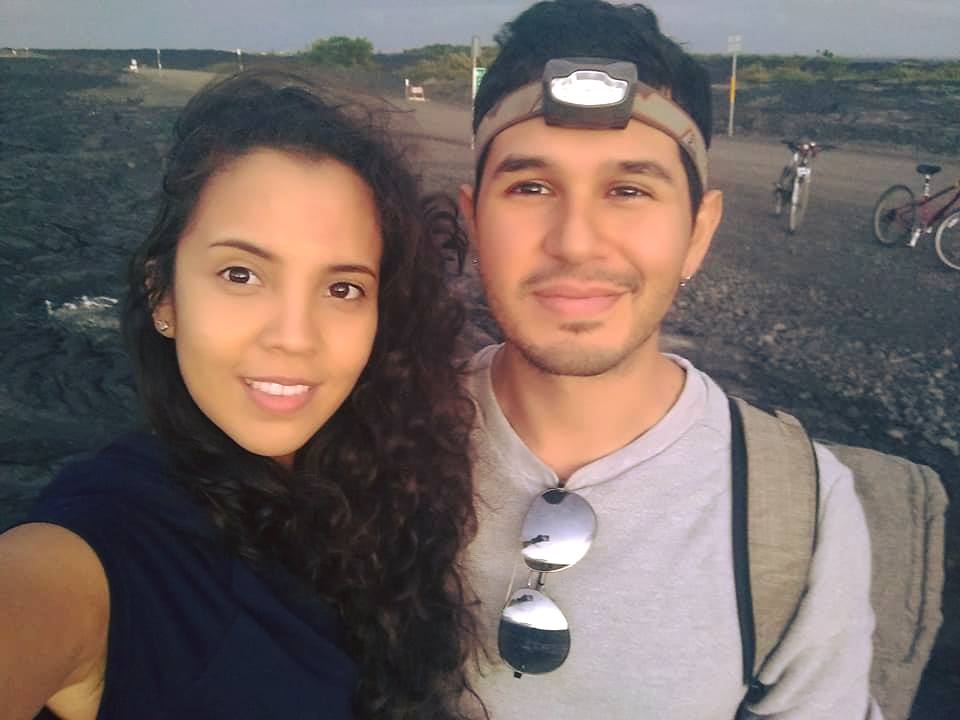
I currently reside in Taipei, Taiwan, working as a Postdoctoral Researcher at the Academia Sinica Institute
of Astronomy and Astrophysics (ASIAA). At ASIAA, I collaborate mainly with Nagayoshi Ohashi and Sienny Shang,
focusing on ALMA observations of protostellar sources. I earned my PhD from the University of Hawaii at Manoa,
where my work was supervised by Michael Connelley and Bo Reipurth. During this period, I also collaborated with
Jonathan Williams and Adwin Boogert on shorter-term research projects.
I consider myself an active person who enjoys playing sports, trying new things, and constantly learning.
I have enjoyed activities such as salsa and bachata dancing, learning Mandarin Chinese, snorkeling, and contact
sports like Taekwondo and Kick Boxing. I also have a passion for teaching, with many years of experience as a
physics and math instructor. I have even attempted teaching Latin dance classes.
My interest in science and astronomy began in high school. The mysteries of the universe fascinated me,
and I believed uncovering them was an extraordinary endeavor. Initially, the math and physics behind these
phenomena captivated me the most. However, during my PhD I developed a significant interest in the beauty
of observational astronomy.
Research
My research interest are mainly star and planet formation. I would like to understand
the effects of magnetic fields in low-mass young stars and how the star and the disk affect
each other at the earliest stages of planet formation.
Star formation and evolution
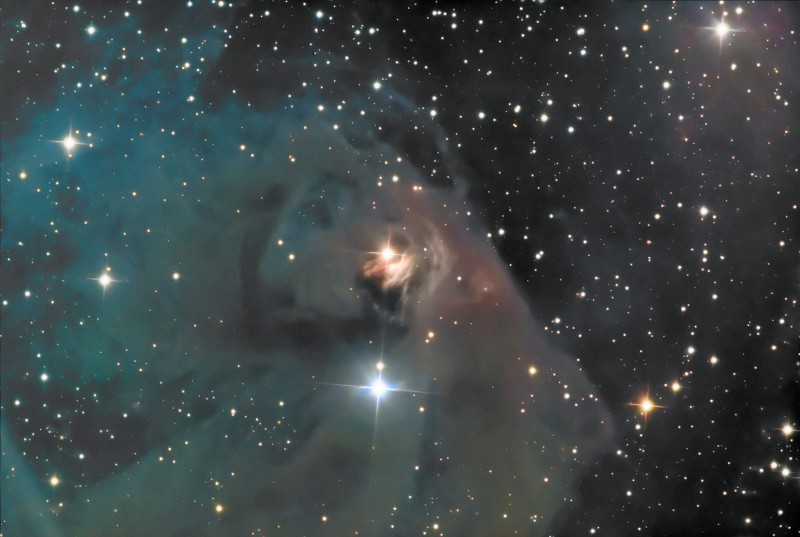
Stars younger than 1 Myr old, often referred to as protostars, are typically
embedded within their birth material, making them accessible primarily through IR observations.
I am interested in characterizing their stellar properties, such as temperature and gravity.
This helps indirectly determine their masses and age, which in turn, allow us to understand
the growth and evolution of young stars.
Magnetic fields
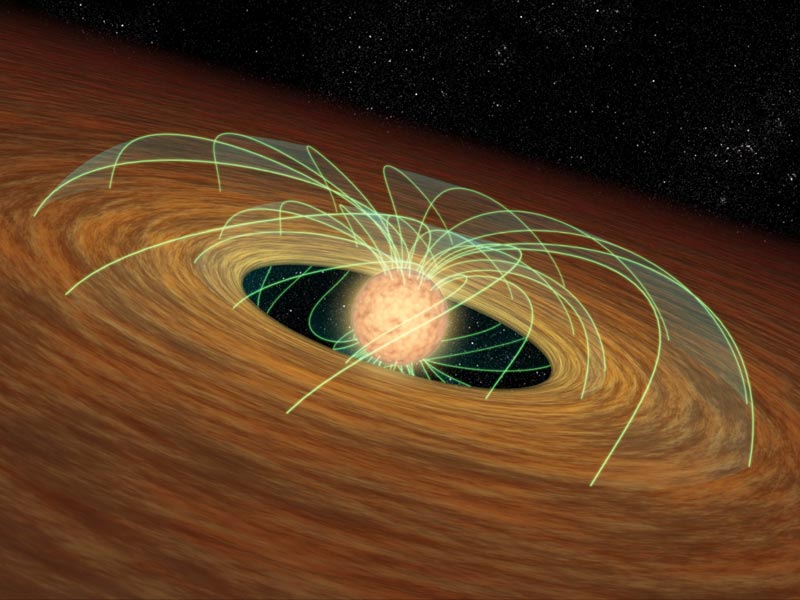
Magnetic fields are fundamentally important in the formation and evolution of stars,
but they are often poorly understood and characterized. I perform measurements of magnetic
fields in young stars using high-resolution IR spectroscopy through the Zeeman effect.
These observations provide insights into how magnetic fields influence the surface and internal
structure of young stars. Additionally, the relationship between magnetic fields and stellar
properties allows us to investigate the origin of magnetism in stars.
Protoplanetary disks

Protoplanetary disks are the birthsite of planets. They are proven to be highly complex when observed at sufficient
spatial resolution which could be itself a signpost of ongoing planet formation. I study the physical
properties of these disks using (sub)mm ALMA observations. This enables us to characterize the amount of material
in the disks, providing insight into the mass available for planet formation and further stellar growth.
Atmospheric telluric correction
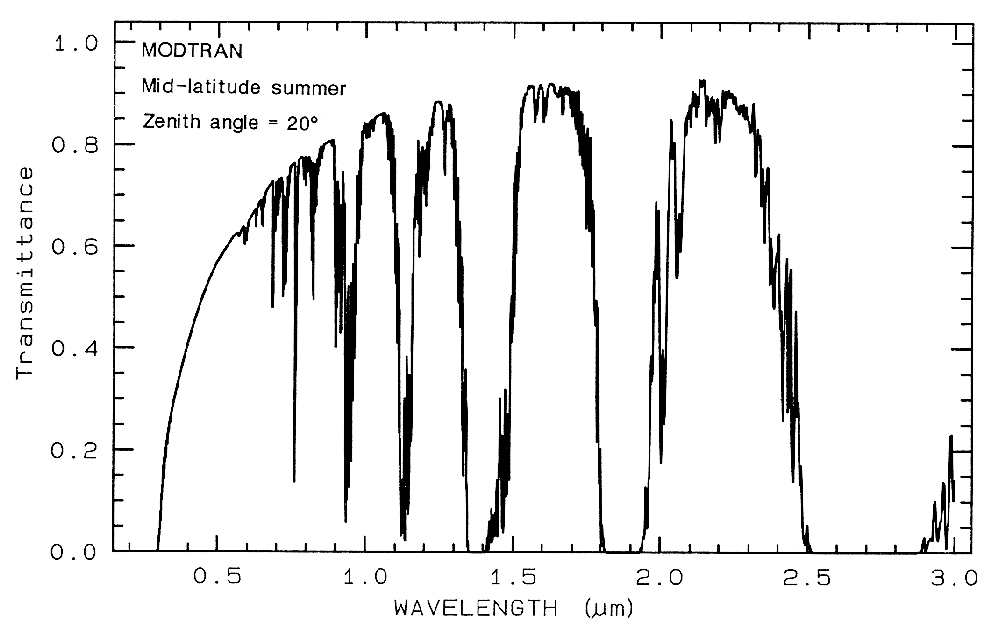
The Earth's atmosphere is opaque at both discrete and continuous wavelengths throughout the electromagnetic spectrum.
In the IR wavelength, it is common to observe what are known as A0 telluric standard stars to partially alleviate the
discrete flux reduction seen in the observed science spectra. As part of my work at the NASA Infrared Telescope,
I helped build a code that produces model spectra of Earth’s transmission. This reduces the need for taking spectra of
telluric standard stars. The goal of producing synthetic atmospheric spectra is to increase the observatory's efficiency
by collecting more science spectra during the night and performing the subsequent calibrations during the day.
Publications
A list with all my publications can be found in this ADS link.
A brief summary of my first author's publications is as follow:
First Author Publications
-
iSHELL K-band Survey of Class I and Flat Spectrum Sources:
Magnetic field measurements in the protostellar phase (2024 ApJ)

We performed the first magnetic field strength survey of Class I and Flat Spectrum (FS) sources using
K-band observations with iSHELL. We model the photospheric absorption lines of
34 Class I and FS sources and measure their magnetic field strengths, K-band temperatures, and gravities.
We put the physical properties of Class I and FS sources in context by comparing them to the values derived
for a sample of Class II sources. As shown in the image, the average gravity of Class I and FS objects
is lower than the average gravity of Class II sources, however, a significant overlap between both gravity
distributions exist. Using evolutionary models we show that the average gravity of Class I and FS sources is
0.6 Myrs, significantly younger than the average age of Class II sources of 3 Myrs. Also, the average magnetic field
strength of Class I and FS sources 〈B〉 = 1.8 ± 0.10 kG is comparable to the average magnetic field of Class II sources.
Our results confirm that protostellar sources host strong magnetic fields on their photospheres and they likely accrete
disk material through a magnetosphere similar to their more evolved T Tauri counterparts.
-
Early Planet Formation in Embedded Disks (eDisk). XII. Accretion Streamers, Protoplanetary Disk,
and Outflow in the Class I Source Oph IRS 63 (2023 ApJ)

We present ALMA observations of the Class I source Oph IRS63 in the context of the Early Planet
Formation in Embedded Disks (eDisk) large program. Our ALMA observations of Oph IRS63 show
a myriad of protostellar features, such as a shell-like bipolar outflow (in 12CO), an extended rotating
envelope structure (in 13CO), a streamer connecting the envelope to the disk (in C18O), and several
small-scale spiral structures seen towards the edge of the dust continuum (in SO). On the left image, I show
the beatiful outflow detected in CO, which shows shell-like structures. On the right image, I show a very
intriguing spiral and ring-like structure detected in SO.
-
The Effects of Starspots on Spectroscopic Mass Estimates of Low-mass Young Stars (2022 ApJ)
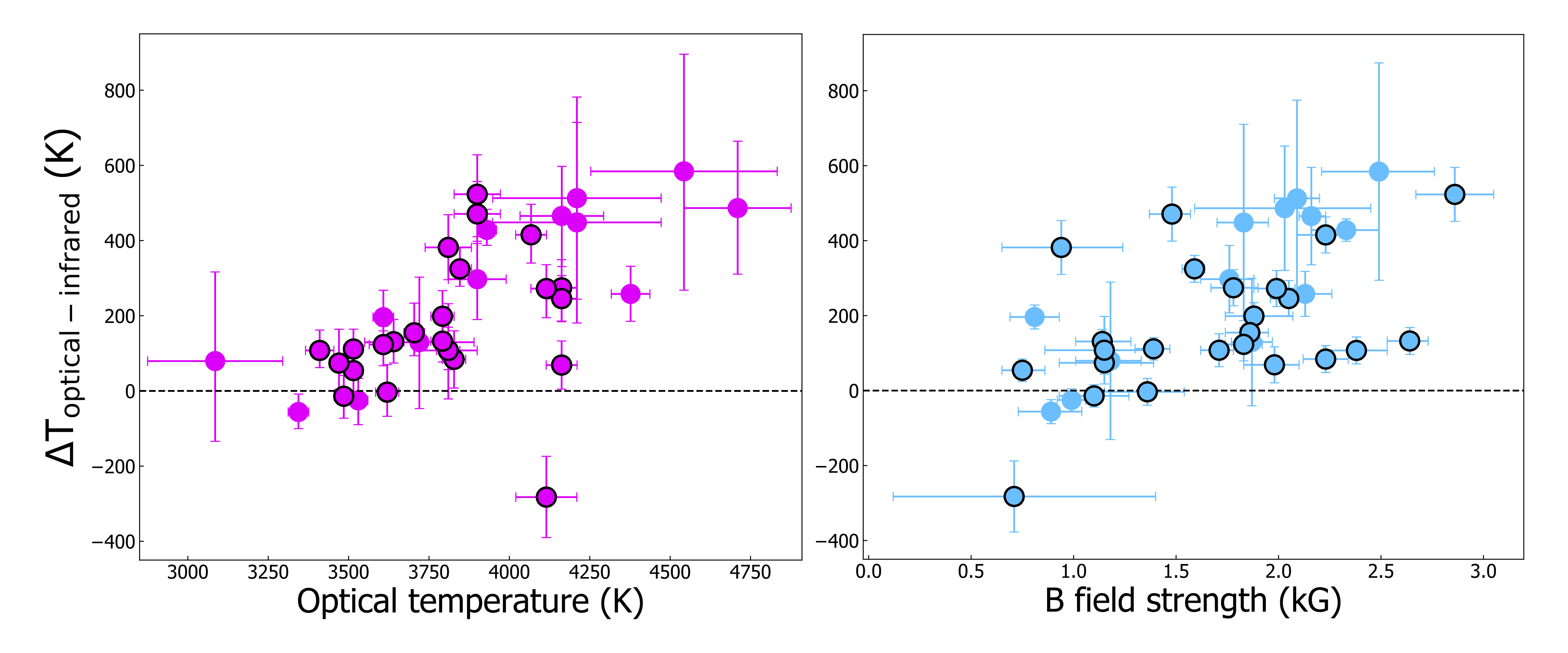
Magnetic fields and mass accretion processes create dark and bright spots on the surface of young stars.
These spots manifest as surface thermal inhomogeneities, which alter the global temperature measured on the stars.
To understand the effects and implications of these starspots, we conducted a large iSHELL high-resolution infrared
spectroscopic survey of T Tauri stars in Taurus-Auriga and Ophiuchus star-forming regions. Our main results
are that 1) there is a systematic temperature difference between optical and infrared observation (left panel)
and 2) that a positive correlation between our measured magnetic field strengths and the temperature differences (right panel).
The discrepant temperature measurements imply significant differences in the inferred stellar masses for these young stars.
In this article paper, we use results from ALMA observations to discern which temperature is really tracing the effetive
temperature of these largely spotted stars.
-
The Anatomy of an Unusual Edge-on Protoplanetary Disk. II: Gas temperature and a warm outer region (2021 AJ)

We present high-resolution 12CO and 13CO 2 - 1 ALMA observations of the highly-inclined protoplanetary disk
around SSTC2D J163131.2-242627. We apply a modified version of the Topographically Reconstructed
Distribution method presented by Dutrey et al. (2017) to derive the temperature structure of the disk.
CO is clearly detected from two surface layers separated by a midplane region in which CO emission is suppressed,
as expected from freeze-out in the cold midplane. Outside of R > 200 au, the midplane temperature of the disk increases
with a nearly vertically isotermal pro�file. The transition in CO temperature coincides in position with
a dramatic reduction in the sub-micron and sub-millimeter emission from the disk. We interpret this
phenomenon as interstellar UV radiation providing an additional source of heating to the outer part
of the disk.
-
Is T Tauri North a "Classical" T Tauri Star? (2020 ApJ)
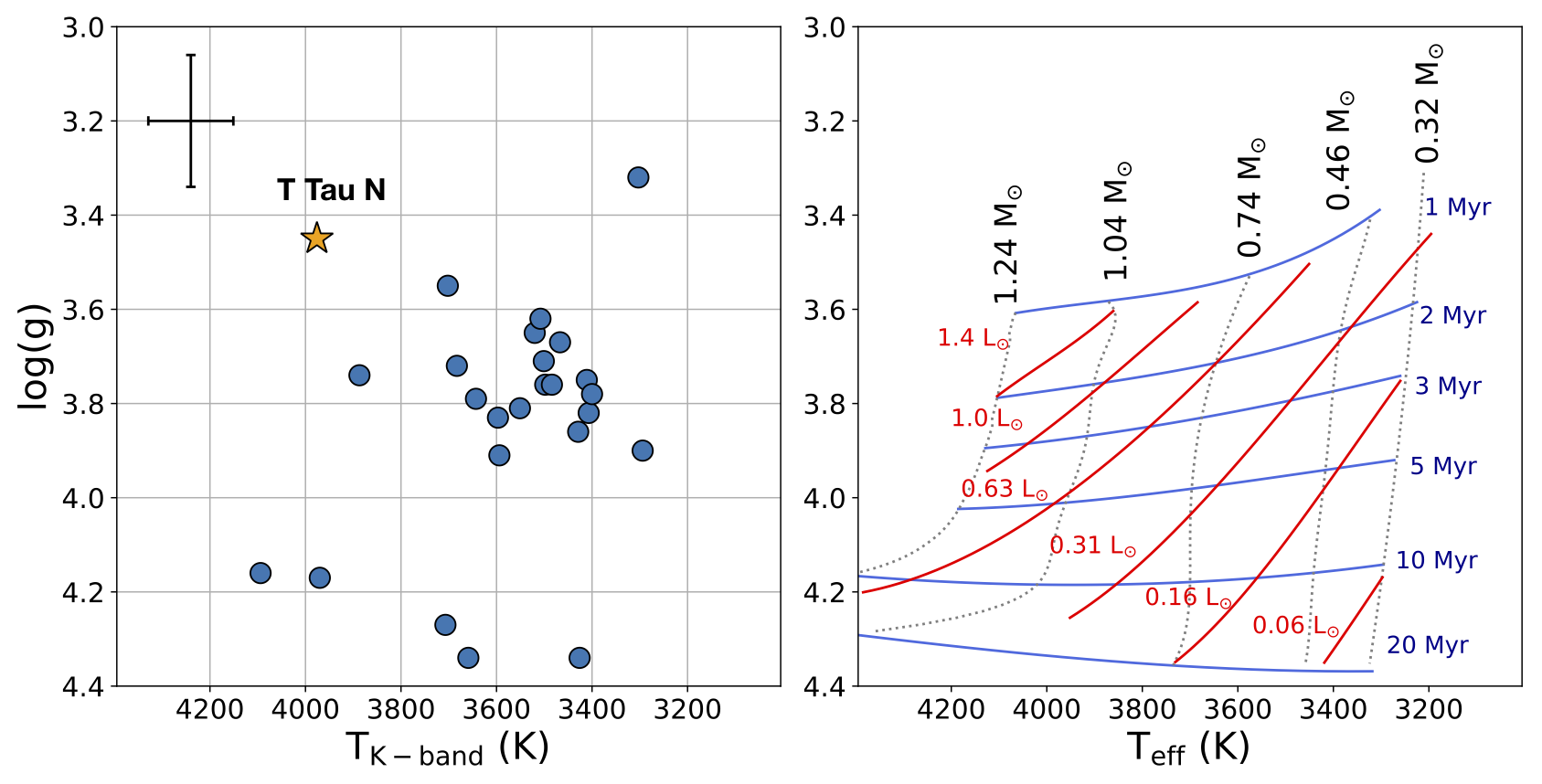
We present high-resolution H- and K-band spectroscopic observations of the archetypal T Tauri star T Tau North.
We find that the IR temperature derived from our work is ~800 K cooler than optical temperature derived in the literatture.
This temperature difference is interpreted as cool or hot spots, or both, covering a significant part of the surface of T Tau N. The gravity derived
for T Tau N is lower than the gravity of nearly every other star in a sample of 24 classical
T Tauri stars in Taurus. Combining these temperature and gravity results with magnetic stellar evolutionary
models, we find the age of T Tau N to be less than 1 Myr old. These results suggest that T Tau N is in an earlier
evolutionary stage than most classical T Tauri stars in Taurus, arguing that it is a protostar ejected from the
embedded southern binary system shortly after its formation.
- Measuring the Magnetic Field of
Young Stars Using iSHELL Observations: BP Tau and V347 Aur (2019 ApJ)
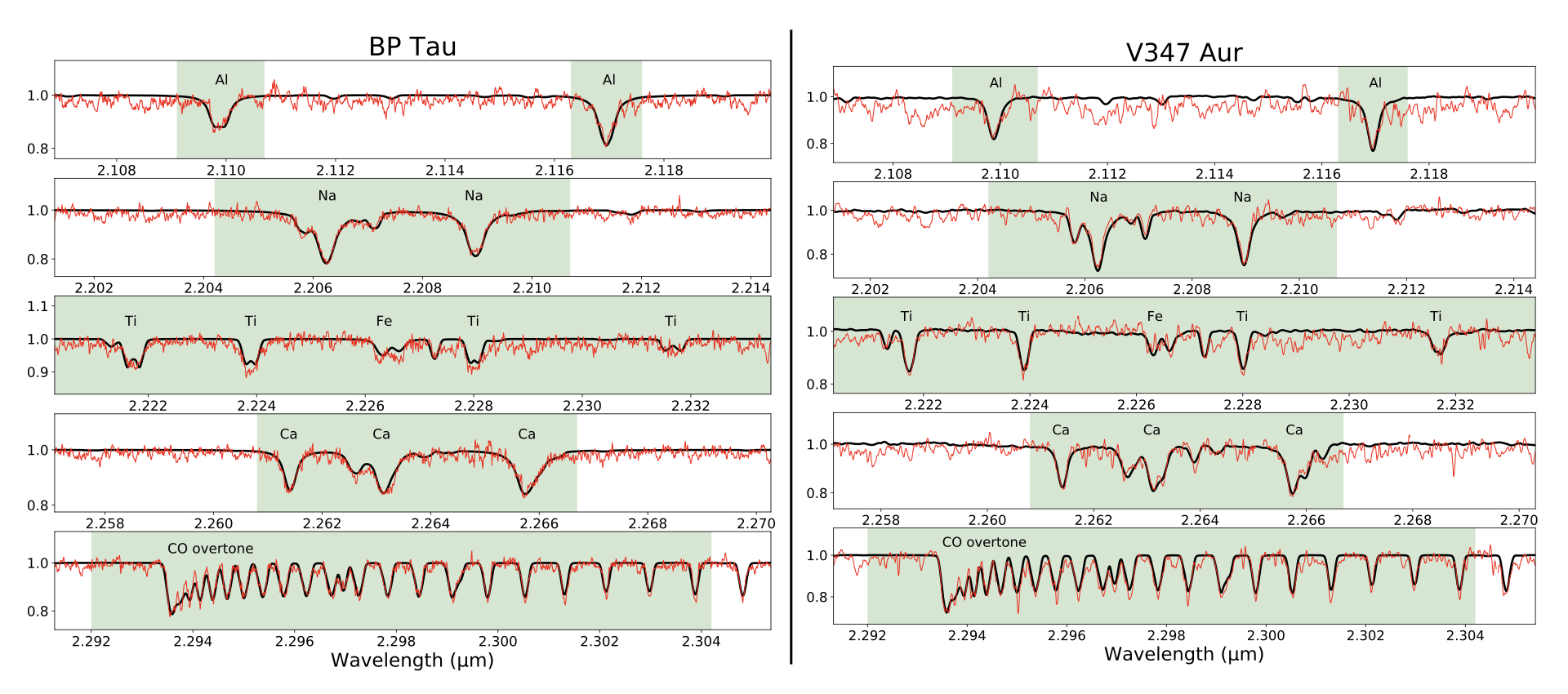
We present stellar parameters and magnetic field strength measurements of BP Tau and V347 Aur, both young stars
observed with the near-infrared spectrograph iSHELL. For BP Tau, we measure a surface magnetic field strength of
2.5 kG literature results. For this star, however, we obtain a much lower temperature value than previous optical studies
(dT~ 400 K) and interpret this significant temperature difference as due to the relatively higher impact of
starspots at near-infrared wavelengths than at optical wavelengths. We further apply this technique to the class I
protostellar source V347 Aur and measure for the first time its magnetic field strength of 1.35 kG
and its surface gravity log g= 3.25. Lastly, we combine our measurements with pre-main-sequence stellar
evolutionary models and illustrate the effects produced by starspots on the retrieved masses and ages of young
stars.
Selected co-author Publications
Non-refereed Publications
Christian's Resume

Here is an October 2024 version of my resume.
Here is a February 2024 version of my CV.
Contact Information
I am currently based in Taiwan at the Academia Sinica Institute of Astronomy and Astrophysics (ASIAA).
Elements
Text
This is bold and this is strong. This is italic and this is emphasized.
This is superscript text and this is subscript text.
This is underlined and this is code: for (;;) { ... }. Finally, this is a link.
Heading Level 2
Heading Level 3
Heading Level 4
Heading Level 5
Heading Level 6
Blockquote
Fringilla nisl. Donec accumsan interdum nisi, quis tincidunt felis sagittis eget tempus euismod. Vestibulum ante ipsum primis in faucibus vestibulum. Blandit adipiscing eu felis iaculis volutpat ac adipiscing accumsan faucibus. Vestibulum ante ipsum primis in faucibus lorem ipsum dolor sit amet nullam adipiscing eu felis.
Preformatted
i = 0;
while (!deck.isInOrder()) {
print 'Iteration ' + i;
deck.shuffle();
i++;
}
print 'It took ' + i + ' iterations to sort the deck.';
Lists
Unordered
- Dolor pulvinar etiam.
- Sagittis adipiscing.
- Felis enim feugiat.
Alternate
- Dolor pulvinar etiam.
- Sagittis adipiscing.
- Felis enim feugiat.
Ordered
- Dolor pulvinar etiam.
- Etiam vel felis viverra.
- Felis enim feugiat.
- Dolor pulvinar etiam.
- Etiam vel felis lorem.
- Felis enim et feugiat.
Icons
Actions
Table
Default
| Name |
Description |
Price |
| Item One |
Ante turpis integer aliquet porttitor. |
29.99 |
| Item Two |
Vis ac commodo adipiscing arcu aliquet. |
19.99 |
| Item Three |
Morbi faucibus arcu accumsan lorem. |
29.99 |
| Item Four |
Vitae integer tempus condimentum. |
19.99 |
| Item Five |
Ante turpis integer aliquet porttitor. |
29.99 |
|
100.00 |
Alternate
| Name |
Description |
Price |
| Item One |
Ante turpis integer aliquet porttitor. |
29.99 |
| Item Two |
Vis ac commodo adipiscing arcu aliquet. |
19.99 |
| Item Three |
Morbi faucibus arcu accumsan lorem. |
29.99 |
| Item Four |
Vitae integer tempus condimentum. |
19.99 |
| Item Five |
Ante turpis integer aliquet porttitor. |
29.99 |
|
100.00 |











